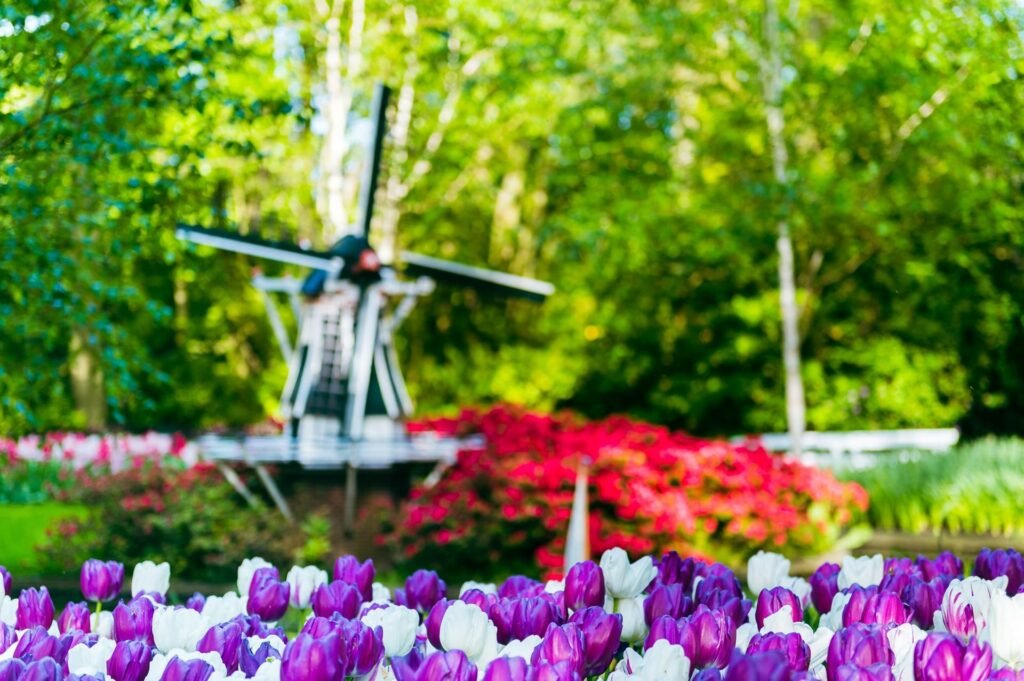When my parents named me Barbara, did they know they were sealing my fate? Did they understand that, no matter where I lived, I would always be a foreigner, always just slightly out of place?
Growing up in Lisse, a small Dutch town famous for its tulip fields, I always felt a little different. My mother was unmistakably Dutch, but my father was Spanish, and that alone made us stand out. We weren’t quite Dutch enough to be considered fully Dutch.
Yet, when I moved to Spain as an adult, believing I might finally find that missing piece of my identity, I was in for a rude awakening. Spain embraced me in many ways—its people, food, music, and traditions felt familiar, but I was still an outsider. Too direct, too structured, too Dutch.
And so it has gone, in every country I have called home. The Netherlands, the UK, the UAE, Spain, Vietnam—everywhere, I am both a local and a stranger. My name itself carries this reality prophetically. Barbara—from the Greek barbaros, meaning “foreigner” or “stranger.” It was historically used to describe those who spoke unintelligible languages, outsiders from distant lands. Maybe my parents unknowingly predicted my future: always a little foreign, no matter where I am.

A Family of Wanderers
But perhaps this feeling of being caught between worlds is not just about me. My family has been moving for centuries, tracing paths across continents like migratory birds. My father, born in Cádiz, had a father who was born in Tangiers. His grandfather, in turn, Saturnino Ximénez, was a Menorcan adventurer who met my great-grandmother Natalia in Egypt. Fleeing Russia after the Bolshevik Revolution, Natalia would carry with her the legacy of the Konradi and Turbin families, whose roots stretched across Russia, Germany, and Latvia.

Saturnino’s travels were legendary. His journeys took him from Spain to North Africa, the Ottoman Empire, and Central Asia. His work in archaeology and history was intertwined with his political and commercial interests, making him a figure of both admiration and controversy. Some accounts of his travels suggest he might have even engaged in espionage. His ability to navigate different cultures, languages, and disciplines reflected the very essence of what it means to be an eternal immigrant.
Every few years or so, I am contacted by a distant relative or historian—like Olga from Canada, who traced our shared lineage through Natalia’s aunt, or the Spanish scholar who studied Saturnino’s contributions to archaeology. Through these connections, I see the broader narrative of my ancestry: a family of intellectuals, explorers, and survivors who never stayed in one place for long.
The Third Culture Experience
Many Third Culture Kids (TCKs) experience this same sense of fluid identity. Born in one place, raised in another, they struggle to answer the simple question: “Where are you from?” The answer is often long-winded or conditional—”Do you mean where I was born, where I grew up, or where I feel most at home?” This fluidity is both a gift and a burden. For some of us, it makes us adaptable, capable of thriving in diverse environments. For others, it leaves us feeling rootless, as if we belong everywhere and nowhere at once.
Yet, TCKs and perpetual immigrants contribute something invaluable to the world. Our experiences shape global perspectives, encourage cultural exchange, and break down rigid national identities. We are bridges between worlds, connectors of people and ideas. The world thrives on these connections, just as it did in Saturnino’s time, when explorers, merchants, and scholars crossed borders with relative ease, fostering new ideas and discoveries.
Borders, Then and Now
One thing that fascinates me about my ancestors’ stories is how easily they seemed to move across borders. Saturnino traveled from Spain to Egypt to Russia; there are documents showing him in Ethiopia during the Italian-Ethiopian war and standing at the Suez Canal when the Spanish returned after the Philippines declared its independence in 1898. Having struggled to reach Russia at the outbreak of World War I to settle with Natalia and their young family on their estate in Mogilev, the Bolshevik Revolution saw them escaping through Warsaw and ending up in Rome. In those days, movement was still a challenge, but it often depended more on resources and social standing than on bureaucracy.
Today, despite technological advances and globalization, borders have become more rigid than ever. The ease with which one can move depends largely on the color of their passport, a cruel irony in a world that prides itself on connectivity. I hold a Spanish passport, which grants me access to much of the world without hassle. But many are not so lucky. The concept of “where you are allowed to go” is dictated by geopolitics, by arbitrary lines drawn on maps generations ago.
My ancestors had the freedom to reinvent themselves in new lands, but would they have been able to do the same today? Would Saturnino have crossed borders so freely? Would Natalia and her children, my granddad and great-aunt, have escaped?
Choosing the Life of an Immigrant
I have made a home in Vietnam for over a decade now, and I still don’t know if I will ever feel completely “of” this place. When it comes to my national identity, I remain on the fence. But I am comfortable in my in-between-ness. The world is vast, and I no longer expect to fit neatly into a single national identity. Instead, I embrace being a citizen of everywhere and nowhere.
And so, I return to my name. Was I always destined to be a foreigner? Or have I simply claimed this as my story, shaping my life around an idea that was planted in me at birth? Maybe it doesn’t matter. I find joy in the journey, in the adventure of finding—again and again—what it means to belong.


